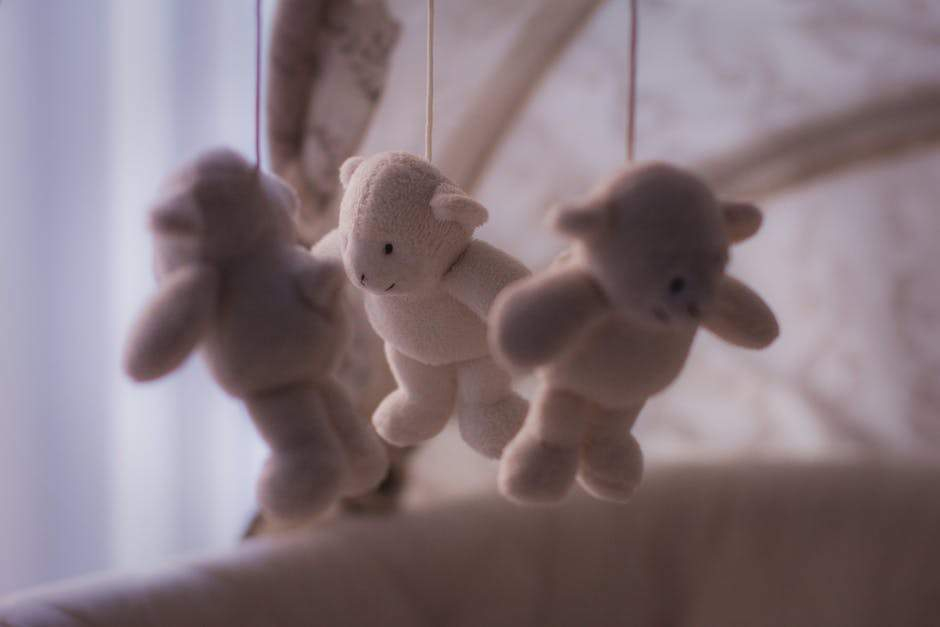How I Tackled Sleep Training My Baby & Saved My Sanity
Lifestyle
|
May 8, 2018
|
7 MIN READ

"Sleep training." Two little words guaranteed to make new parents shudder (and elicit many passionate debates from fans and opponents alike).

While sleep training has many variations (extinction, graduated extinction, the Ferber method, pick-up-put-down, the chair method, and so on), it is often shrouded in mystery and misconception. There’s really no “right” or “wrong” way to get your kid to sleep – like most aspects of parenting, each parent needs to do what he or she is comfortable with. Co-sleeping, room sharing, or putting the child in his own room are all acceptable as long as you and your child are happy with it. Co-sleeping and feeding my child several times a night does not make me happy, and I don’t think interrupted sleep for my son made him happy, either! At six months old, he woke up several times in the night to feed and it was slowly wearing away at my energy and ability to function normally in the day. After several weeks of sleepless nights, I decided an intervention was necessary.
As I was doing some research, I came across many forums, blogs, and pieces of advice from well-meaning people that sleep training is cruel because it forces the baby to cry himself to sleep, can make him feel abandoned, and cause undue stress which is bad for brain development and personality. But I also found arguments that refute this, as well.
Sleep training is not teaching the baby to cry himself to sleep. It’s teaching him to fall asleep without crutches – like rocking to sleep, a breast, bottle, or pacifier – so that he won't freak out if said crutch is not there when he wakes up. Personally, I found the Ferber method to be the best option for my family. This form of sleep training involves putting the child down when he’s sleepy but awake, letting him see the parent exit the room, and closing the door so he can fall asleep on his own without a crutch. In the beginning, the child inevitably cries because it’s new and disorienting for him. On our first night, I let him cry for three minutes, went in and soothed for a few minutes, left again for five minutes, then repeated the process, elongating the time elapsed between each "going-in" interval. It’s supposed to go for 3, 5, 7, 10, 12, 15, and then 20 minutes. If he cried longer than 20 minutes, I kept going in every 20 minutes till he fell asleep.

Ideally, the child falls asleep within an hour, but on the first night, he can potentially cry for several hours before he falls asleep (mine cried for two). When my son woke again in the middle of the night, I initiated the going-in intervals of 3, 5, 7, etc minutes again. The next night he cried a little less, then less the night after, until he became “trained” to fall asleep on his own with no crying at all. The crib and room become associated with sleep, so when my husband or I kiss him goodnight and turn off the lights, he goes to sleep within just minutes (Alhamdulillah!). The process feels very hard in the beginning, but it is so worth it – we’re now happily sleeping through the night for four months and counting! Here is how I tackled it:
1. Get the OK from your pediatrician first. Before you sleep train, you must consult your pediatrician first to make sure your baby is at an acceptable weight and is otherwise healthy and ready to be sleep trained. When I thought we were mentally ready to sleep train, my pediatrician told me to hold off because the night feeds my baby was doing (two or three per night) were necessary to his weight gain, and he was actually waking because he was hungry, not because he needed the milk to fall asleep. So, make sure you check with the doctor first before you launch into it!
2. Start on a weekend. The quote, “it gets worse before it gets better” applies here. Sleep training will be disorienting for you AND your baby. He is not used to it and he will cry and protest for as long as he can to get you to come back and give him what he needs to fall asleep. Knowing you will lose sleep makes it somewhat easier, but make sure you do it at a time when you can afford to lose sleep, as opposed to the middle of the work week or right before a vacation.
3. Both parents need to be on the same page. It is so important that everyone in the household agrees on the training method because everyone in the house will be losing some sleep during the training period. If one of you cracks and gives the baby his crutch, it’ll make you need to start all over again, and the discrepancy and mixed messages the baby gets will confuse him and backfire on everyone.

4. Have a support group. Having come out on the other side of sleep training, I can assure you that it is worth the pain. Nonetheless, it’s one of the hardest things you’ll ever do. As mothers, it absolutely goes against our nature to ignore our babies’ cries. The moment they come into our lives, we are wired to tend to their every need because their survival literally hinges on it. So when we hear them cry, it is painful and excruciating to ignore it, and you will want to have a friend you can text who has successfully sleep trained her child or is currently going through it, who can root you on when you feel like giving up. Having someone who understands your pain works wonders to keep you motivated when the going gets tough!
5. Get a good video monitor. This helped me a lot because I could see exactly what my baby was doing in his crib and could rush in if necessary. It also helped reassure me that if he went quiet, it was because he was asleep and I could see him toss and turn in his sleep, as well. My baby video monitor also tells me the room temperature, which is super helpful in helping me decide how much to bundle him up for his sleep.
6. Join Respectful Sleep Training on Facebook. This private Facebook group adds new members every Wednesday. It has over a hundred thousand members, which speaks to how desperate we parents are to get a good night’s sleep! The moms and dads on here are very supportive, and anytime you need a listening ear, encouragement, advice, or just want to feel less alone as you train, this is the place to be. They also have amazingly relevant and informative articles to help you through the process.
7. Read Raising a Self-Reliant Child by Dr. Alanna Levine. I got this book from the library and love the advice on how to foster independence in the child through compassion, discipline, and respect. It also gives detailed instructions on how to implement the Ferber and Extinction sleep training methods.
8. Don’t nap and night train at the same time. Sleep training requires mostly good rest from the day to sleep well at night (and vice versa). Sleep training for BOTH will cause the baby to lose the rest and make him over-tired, which actually impedes his ability to falling asleep easily. So tackle each one at a time. If you start with night sleep training, let the baby use his usual crutches to nap during the day. Alternatively, if you want to train for naps first, let the baby use his crutch for night sleep. Don’t let the baby get used to this cycle, though! Once he is trained for one, work on training for the other quickly after.

9. Be consistent. Consistency is your best friend as you sleep train. Children crave consistency because it helps them anticipate what's about to happen. You can have a small bedtime routine, like the last feed, a burp, then surahs, a kiss goodnight, and finally lights out and the door closing. Try to do it at the same time every night so the baby’s body can adjust to it easily. And once you start the actual sleep training itself, stick to it for at least a week before you give up or want to try something else! If you start and stop a day later, then start immediately again, it will confuse your child and only elongate the training for both of you.
Because my son is now sleep trained, I have a few extra hours to chill out and relax every night after I put him to bed, and I don’t need to worry about going back in to feed or soothe him, because he’s perfectly comfortable on his own in his crib. If he does wake up, he is able to fall back asleep on his own without my or my husband's help.
I'll end by saying that what works for one parent may not work for another. However, if you find yourself at your wit’s end and want to get your baby to learn to sleep on his own through the night, sleep training is worth a fair shot! By teaching my son to learn to sleep on his own, I am better-rested, and a better-rested me means a more present and pleasant mommy during the day for him. Also, a better-rested baby means a better eater and a happier camper, overall. It’s a win for the whole family!
Found this post useful? Don't be selfish – share it along with other mamas! They'll thank you later when they get somemuch needed sleep ;)
Have you ever tackled sleep training? What are some of your tips and tricks? Share them in the comments below!
Subscribe to be the first to know about new product releases, styling ideas and more.
What products are you interested in?

